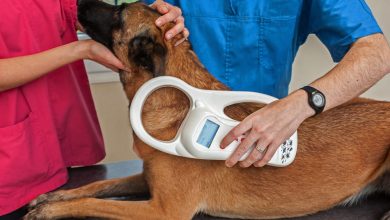What Does Dog Ringworm Look Like

1. Introduction
Dog ringworm is a common fungal infection that affects dogs of all ages and breeds. It is highly contagious and can spread quickly to other animals and even humans. In this article, we will discuss what dog ringworm looks like, its causes, symptoms, diagnosis, treatments, contagiousness, prevention, cost of treating it, and alternatives to treating it.
2. What is Ringworm?
Ringworm is a highly contagious fungal infection caused by the Microsporum or Trichophyton species of fungus. It can affect the skin, hair, and nails of both humans and animals. It is most commonly found on the head, face, feet, and legs of dogs but can occur anywhere on the body. It is not caused by a worm as its name implies but by a fungal infection.
3. Causes of Ringworm in Dogs
The most common cause of ringworm in dogs is contact with an infected animal or person. Other causes include contact with contaminated items such as bedding or grooming tools as well as contact with soil contaminated with the fungus. Ringworm can also be spread through the air from an infected animal or person.
4. Symptoms of Dog Ringworm
The most common symptom of dog ringworm is a circular patch of hair loss on the skin that may be red or scaly. The patch may also have raised edges and be itchy or painful to the touch. In some cases, there may be pustules or blisters present as well as thickened skin or a rash-like appearance.
5. Diagnosing Ringworm in Dogs
To diagnose ringworm in dogs, your veterinarian will perform a physical examination looking for any signs of hair loss or skin lesions that could indicate ringworm infection. Your veterinarian may also take a sample of affected skin for laboratory testing which can confirm the presence of the fungus that causes ringworm.
6. Treating Dog Ringworm
Treatment for dog ringworm typically involves antifungal medications either applied topically to the affected area or given orally in tablet form. In some cases, your veterinarian may recommend shaving off the affected hair to allow for better absorption of medication into the skin as well as prevent further spread of the infection to other areas of the body or other animals/people in contact with your pet.
7. Contagiousness of Dog Ringworm
Dog ringworm is highly contagious and can easily spread from one animal to another through direct contact or through contaminated items such as bedding or grooming tools. It can also spread through indirect contact such as when an infected pet brushes against furniture or walls which then come into contact with another pet who then becomes infected themselves.
8. Prevention of Dog Ringworm
The best way to prevent dog ringworm is to practice good hygiene and keep your pet’s environment clean and free from contamination by disinfecting any items that may be contaminated with the fungus such as bedding or grooming tools regularly and avoiding contact with other animals who may have been exposed to ringworm until they have been treated successfully for their infection.< h2 > 9 . Cost of Treating Dog Ringworm
The cost of treating dog ringworm depends on several factors including the severity of the infection, type of treatment prescribed by your veterinarian (topical vs oral medications), and any additional tests needed for diagnosis (such as laboratory testing). Generally speaking, treatment costs can range from $50-$200 depending on these factors but could be more if additional tests are required or if more aggressive treatments are necessary due to severe infections.
< h2 > 10 . Alternatives to Treating Dog Ringworm
If you are looking for alternatives to traditional treatments for dog ringworm there are several natural remedies available that can help treat milder cases such as apple cider vinegar diluted in water applied directly to affected areas twice daily; tea tree oil diluted in water applied directly to affected areas twice daily; garlic oil applied directly to affected areas twice daily; oregano oil applied directly to affected areas twice daily; turmeric powder mixed with water applied directly to affected areas twice daily; neem oil diluted in water applied directly to affected areas twice daily; aloe vera gel applied directly to affected areas twice daily; and coconut oil applied directly to affected areas twice daily. However, these natural remedies should only be used under veterinary supervision and should not replace traditional treatments prescribed by your veterinarian if your pet has a severe case of ringworm infection.
< h2 > 11 . Conclusion
In conclusion, dog ringworm is a highly contagious fungal infection that can affect both humans and animals alike but is most commonly found on dogs’ heads, faces, feet, and legs. Its symptoms include circular patches of hair loss on the skin that may be red or scaly along with raised edges that may be itchy or painful upon touching them while diagnosis includes physical examination along with laboratory testing if needed while treatment typically involves antifungal medications either topically applied or taken orally in tablet form along with shaving off affected hair if necessary for better absorption into the skin and prevention from further spread of infection. Cost for treating dog ringworms varies depending on several factors but generally ranges from $50-$200 while alternatives such as natural remedies are available but should only be used under veterinary supervision if milder cases are present instead of replacing traditional treatments prescribed by your veterinarian if your pet has a severe case



